I grew up watching bread vendors pass by our house in Batangas every morning, carrying warm Bonete in their wooden boxes. Like many kids, I would run outside with my coins, excited to get these mushroom-shaped breads for breakfast.
Years later, after many video calls with my Lola teaching me her baking secrets, I finally learned to make her special Bonete Bread recipe in my own kitchen. The best part? That amazing moment when you pull them out of the oven and brush them with milk, just like how the old bakeries in Mabini do it.
I'm excited to share this special Batangas bread recipe with you. Don't worry if you're new to baking. If I could learn it, you can, too. What makes Bonete really special is how it's firm on the outside but super soft and buttery inside. It's actually older than pandesal and tastes incredible when it's fresh from the oven. Ready to start baking?
Jump to:
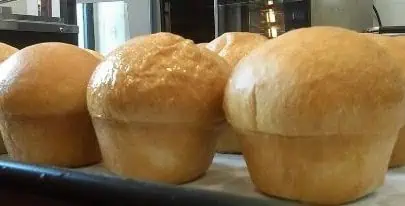
Why You'll Love This Recipe
- Historical Significance: This recipe preserves a piece of Filipino culinary heritage that predates the 16th-century Spanish colonial era
- Perfect Texture: Achieves the iconic mushroom shape with a firm exterior and pillowy interior
- Versatile: Pairs beautifully with traditional Filipino beverages like Kapeng Barako or Tsokolate
- Family-Friendly: Makes a perfect breakfast or merienda (afternoon snack)
- Authentic: Based on traditional techniques from famous Batangas bakeries
Ingredients
Each ingredient in this recipe plays a vital role in creating authentic Bonete bread. All-purpose flour provides the perfect structure while baking powder gives a slight lift. Fresh milk and butter create that signature rich flavor and tender crumb that sets Bonete apart from other Filipino breads.
The egg adds richness and helps achieve that beautiful golden color. The final milk brush is perhaps the most important traditional touch, it creates that distinctive sheen that Batangas bakers have been applying for generations.
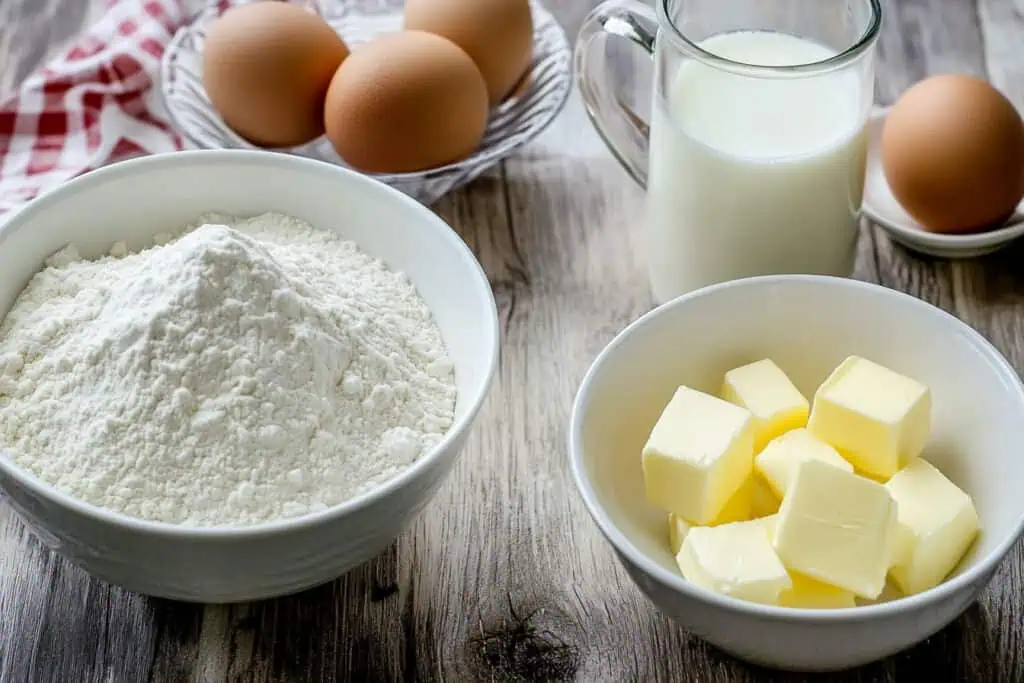
- 3 cups all-purpose flour
- 1 teaspoon baking powder
- 1 teaspoon salt
- 160 ml fresh milk
- 2 teaspoons yeast powder
- ¼ cup white sugar
- 75 grams butter, cubed at room temperature
- 1 egg
For Toppings:
- Softened butter at room temperature
- Fresh milk for brushing
Equipment
- Stand mixer or hand mixer - For kneading the dough efficiently; saves time and energy compared to hand kneading
- Large mixing bowl - For mixing ingredients and allowing the dough to rise
- Saucepan - For warming the milk to the proper temperature to activate the yeast
- Cupcake tray - Essential for shaping the bonete into its characteristic mushroom/hat shape
- Pastry brush - For applying butter before baking and milk after baking to achieve the signature shine
- Kitchen towel - For covering the dough during proofing to maintain proper humidity and temperature
- Measuring cups and spoons - For precise measurements to ensure consistent results
- Oven thermometer - To verify your oven temperature for proper baking (many ovens run hotter or cooler than their settings)
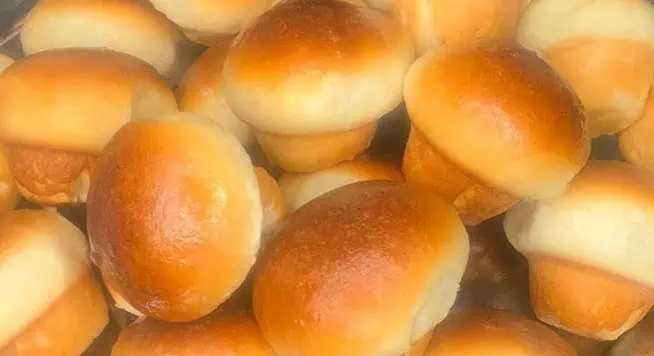
How To Make
- Start by warming 160ml of fresh milk until it's just warm to touch (about 110°F or 43°C) – think of it as testing baby's milk warm, not hot. Stir in ¼ cup white sugar until it dissolves, then sprinkle 2 teaspoons of yeast over the mixture. Let this rest for 10 minutes until it gets frothy and bubbly – this means your yeast is alive and ready to work.
- While waiting, mix 3 cups of all-purpose flour, 1 teaspoon baking powder, and 1 teaspoon salt in a large bowl. Once your yeast mixture is frothy, pour it into your flour mixture and start mixing with an electric mixer or your hands. Add 1 egg and 75 grams of room-temperature butter (cut into small cubes). Keep mixing for about 20 minutes – the dough will be ready when it feels elastic and smooth, like a baby's cheek.
- Place your dough in a clean bowl and cover it with a clean, dry kitchen towel. Let it rest in a warm spot for 1 hour – your dough should double in size. After an hour, gently punch down the dough and knead it briefly. Divide the dough in half, roll each half into a log, then cut into equal-sized pieces. You should get about 13 pieces total.
- Place each piece into a cupcake tray. Cover them again with your kitchen towel and let them rest for another 30 minutes. While they're resting, preheat your oven to 160°C (320°F). Before baking, brush each dough piece gently with room temperature butter.
- Bake for 15-20 minutes until golden brown. The secret to knowing they're done? They should sound hollow when you tap the bottom. As soon as they come out of the oven, brush the tops with fresh milk – this gives them that signature Bonete shine.
- Serve these little treasures while they're still warm. Watch as the butter melts when you tear them open, and enjoy that first heavenly bite with your morning coffee.

Tips from Lola's Kitchen
- Use the windowpane test to check if your dough is properly kneaded: stretch a small piece of dough between your fingers - if it stretches thin enough to see light through without tearing, it's ready.
- Don't rush the proofing - proper rising is key to achieving that perfect texture. In colder months, place the covered dough near (not on) a warm oven.
- The butter must be at room temperature - cold butter won't incorporate properly, and melted butter changes the dough structure.
- For authentic Batangas bonete, don't skip the milk brush right after baking. This traditional step gives the characteristic sheen and adds a subtle sweetness.
- Flour your hands lightly when shaping the dough to prevent sticking, but don't add too much extra flour or the bread will become dense.
- The dough might feel sticky at first, but resist the urge to add more flour unless absolutely necessary. The moisture helps create that perfect texture.
- For the most authentic flavor, use fresh whole milk rather than low-fat or non-dairy alternatives.
- Pay attention to your oven's hot spots - rotate the tray halfway through baking if needed for even browning.
Substitutions
- Milk: If you don't have fresh milk, you can use evaporated milk diluted with water (2 parts evaporated milk to 1 part water).
- Yeast: If using instant yeast instead of active dry yeast, reduce the quantity to 1.5 teaspoons and skip the proofing step - add it directly to your dry ingredients.
- Butter: Unsalted butter is preferred, but if using salted butter, reduce the added salt by ¼ teaspoon. Margarine can work in a pinch but will alter the flavor.
- Flour: Bread flour can be substituted for all-purpose flour for a slightly chewier texture. For a healthier version, you can replace up to ½ cup of all-purpose flour with whole wheat flour.
- Sugar: Brown sugar can replace white sugar for a deeper flavor, though it will slightly darken the bread.
- Egg-free version: Replace the egg with 3 tablespoons of plain yogurt or ¼ cup mashed banana for those with egg allergies.
Troubleshooting
- Bread didn't rise properly: Your yeast might be inactive or expired. Make sure your milk isn't too hot (which kills yeast) or too cold (which doesn't activate it). Check the expiration date on your yeast and store it properly.
- Dough is too sticky: Humidity affects flour absorption. Add flour 1 tablespoon at a time until the dough reaches the right consistency - tacky but not sticking to your hands.
- Bread is too dense: Either the dough was under-proofed or over-proofed. Make sure it doubles in size during the first rise, and doesn't collapse when you poke it gently.
- Uneven browning: Your oven likely has hot spots. Rotate the tray halfway through baking, and consider using an oven thermometer to verify temperature.
- Bread collapses after baking: The dough was probably over-proofed. Next time, do the "poke test" - if you poke the risen dough and the indentation doesn't spring back at all, it's over-proofed.
- Wrong mushroom shape: Be careful not to flatten the dough too much when placing in cupcake tins. The characteristic shape comes from proper shaping and rising.
- Too pale or too dark: Adjust your oven temperature slightly. Pale bread needs higher heat or longer baking time; dark bread needs lower heat or shorter baking time.
Storage & Reheating
- Room temperature: Store in an airtight container for 2-3 days. The bread will gradually lose its freshness but remains good for toasting.
- Refrigerator: Wrap tightly in plastic wrap or place in an airtight container for up to 1 week. The texture will change slightly but can be revived when reheated.
- Freezer: Freeze for up to 3 months in freezer-safe bags. Thaw at room temperature before reheating.
- Reheating methods:
- Oven: Warm in a 350°F (175°C) oven for 5 minutes for the best texture restoration
- Microwave: Heat for 15-20 seconds, but consume immediately as they quickly harden upon cooling
- Steaming: Place in a steamer for 2-3 minutes to restore moisture and softness
- Air fryer: 2 minutes at 300°F (150°C) for a crisp exterior and soft interior
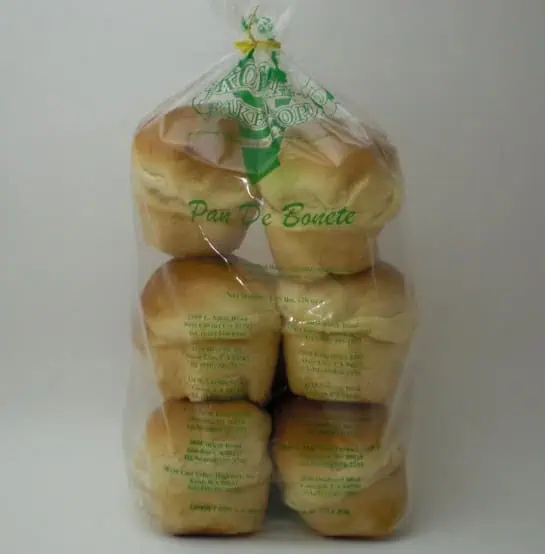
FAQ
What makes Bonete different from Pandesal?
Bonete has a distinctive mushroom shape and firmer texture. It's actually older than pandesal in Philippine history and uses a different preparation method that includes cupcake molds for shaping.
Can I make this without a stand mixer?
Yes, you can knead by hand for 25-30 minutes. It requires more effort but gives you better feel for when the dough reaches the perfect elasticity.
Why is my dough too sticky?
Humidity affects flour absorption. Start with the recommended amount and gradually add more flour if needed until the dough feels tacky but not sticky.
Can I make the dough ahead of time?
Yes, you can refrigerate the dough after the first rise for up to 24 hours. This actually develops more flavor. Let it come to room temperature before shaping.
How do I know when they're done baking?
They should be golden brown and sound hollow when tapped on the bottom. An internal temperature of 190°F (88°C) indicates they're fully baked.
Can I add fillings to bonete bread?
Yes! Traditional variations include cheese or ube filling. Add about 1 tablespoon of filling in the center of each dough piece before placing in the cupcake tray.
Why brush with milk instead of egg wash?
Milk wash gives the signature gentle sheen of authentic bonete without the heavy gloss of egg wash. It's part of the traditional Batangas preparation method.
Can I use a regular baking sheet instead of a cupcake tray?
For authentic bonete shape, cupcake trays are recommended. If using a baking sheet, place dough pieces well apart and they'll be flatter - more like dinner rolls.
How many calories are in each bonete?
Each piece contains approximately 180 calories, 26g carbohydrates, 4g protein, and 7g fat.
Related
Looking for other recipes like this? Try these:

Batangas Bonete Bread (Pan de Bonete) Recipe
Equipment
- Stand mixer or hand mixer (Para sa pagmamasa / For kneading)
- Large mixing bowl (Mangkok / Mixing bowl)
- Saucepan (Kaserola / Para sa pag-init ng gatas / For heating milk)
- Cupcake tray (Para sa pagporma / For shaping)
- Pastry brush (Para sa paglalagay ng butter at gatas / For brushing butter and milk)
- Kitchen towel (Tela / Para sa pagtatakip habang lumalaki ang masa / For covering during proofing)
- Measuring cups and spoons (Para sa eksaktong sukat / For precise measurements)
- Oven thermometer (Para sa tamang temperatura / For accurate temperature)
Ingredients
For the Dough:
- 3 cups all-purpose flour harina
- 1 teaspoon baking powder pampaalsa
- 1 teaspoon salt asin
Wet Ingredients:
- 160 ml fresh milk gatas
- 2 teaspoon yeast powder lebadura
- ¼ cup white sugar puting asukal
- 75 grams butter cubed at room temperature (mantikilya, hiwain ng parisukat)
- 1 egg itlog
For Toppings:
- Softened butter at room temperature malambot na mantikilya
- Fresh milk for brushing sariwang gatas para sa pagpahid
Instructions
- Start by warming 160ml of fresh milk until it's just warm to touch (about 110°F or 43°C) – think of it as testing baby's milk warm, not hot. Stir in ¼ cup white sugar until it dissolves, then sprinkle 2 teaspoons of yeast over the mixture. Let this rest for 10 minutes until it gets frothy and bubbly – this means your yeast is alive and ready to work.
- While waiting, mix 3 cups of all-purpose flour, 1 teaspoon baking powder, and 1 teaspoon salt in a large bowl. Once your yeast mixture is frothy, pour it into your flour mixture and start mixing with an electric mixer or your hands. Add 1 egg and 75 grams of room-temperature butter (cut into small cubes). Keep mixing for about 20 minutes – the dough will be ready when it feels elastic and smooth, like a baby's cheek.
- Place your dough in a clean bowl and cover it with a clean, dry kitchen towel. Let it rest in a warm spot for 1 hour – your dough should double in size. After an hour, gently punch down the dough and knead it briefly. Divide the dough in half, roll each half into a log, then cut into equal-sized pieces. You should get about 13 pieces total.
- Place each piece into a cupcake tray. Cover them again with your kitchen towel and let them rest for another 30 minutes. While they're resting, preheat your oven to 160°C (320°F). Before baking, brush each dough piece gently with room temperature butter.
- Bake for 15-20 minutes until golden brown. The secret to knowing they're done? They should sound hollow when you tap the bottom. As soon as they come out of the oven, brush the tops with fresh milk – this gives them that signature Bonete shine.
- Serve these little treasures while they're still warm. Watch as the butter melts when you tear them open, and enjoy that first heavenly bite with your morning kape. Store any leftovers (if you have any!) in an airtight container, but trust me, these are best enjoyed fresh from the oven, just like how the old panaderias in Batangas have been serving them for generations.
- Remember: The dough might feel sticky at first, but resist the urge to add more flour unless absolutely necessary. The moisture helps create that perfect texture we're looking for. Also, don't skip the final milk brush – it's what gives Bonete its characteristic finish that sets it apart from other Filipino breads.
Tips from Lola's Kitchen
- Use room temperature ingredients for better incorporation
- The dough should be tacky but not sticky - add flour gradually if needed
- Test yeast activity before using by ensuring it foams in warm milk
- For the perfect mushroom shape, don't flatten the dough too much
- Brush with milk immediately after baking for the signature shine
Nutrition
The Story Behind Batangas Bonete Bread
Long before pandesal became the Philippines' breakfast bread of choice, the kitchens of Batangas were already filling with the aroma of freshly baked Bonete. This historic bread, known locally as Pan de Bonete or Pambonete, takes its name from the Spanish words "pan" (bread) and "bonete" (hat), describing its distinctive mushroom-like shape that resembles a small hat.
The story of Bonete bread is deeply woven into the fabric of Batangas culture, particularly in the coastal town of Mabini. Local historians and elderly residents proudly share that Bonete predates even the introduction of pandesal by Spanish colonizers in the 16th century, making it one of the oldest bread varieties in Philippine culinary history. This heritage bread tells the tale of early Filipino baking traditions, showcasing how local bakers mastered the art of breadmaking even before colonial influences.
In the golden age of Batangas bakeries, several establishments became famous for their exceptional Bonete. The bakeries of Mayor Calangi, Mabini Bakery, Sembranos Bakery, Maderazo's Bakery, and Esperanza Bakery were household names, each guarding their secret recipes that made their Bonete special. These bakeries helped establish the bread's signature characteristics - a firm exterior hiding a pillowy, buttery interior that makes it perfect for morning coffee.
Perhaps the most cherished memory among Batangueños is the tradition of early morning Bonete vendors. Walking through neighborhoods with large brown boxes full of freshly baked, still-warm Bonete, these vendors were a familiar sight and sound in Batangas communities. Their calls of "Bonete! Mainit pa!" (Bonete! Still hot!) would draw people from their homes, eager to start their day with warm bread and coffee. This practice, though less common today, remains a beloved part of Batangas' food heritage.
Today, Bonete continues to hold a special place in Filipino cuisine, particularly in Batangas province. While modern bakeries have introduced countless new bread varieties, many families still prefer starting their day with this time-tested favorite, especially when paired with the region's famous Kapeng Barako (native Batangas coffee). The bread's enduring popularity proves that some traditions, especially those involving good food, never truly fade away.
This recipe preserves these centuries of tradition, bringing the authentic taste of Batangas heritage to your own kitchen. Each Bonete you bake carries forward a piece of Filipino culinary history, connecting your table to generations of Batangueño bakers who perfected this beloved bread.
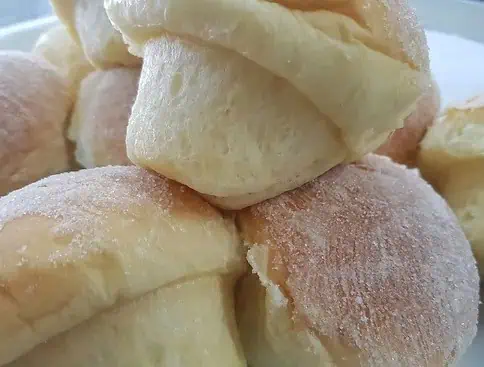





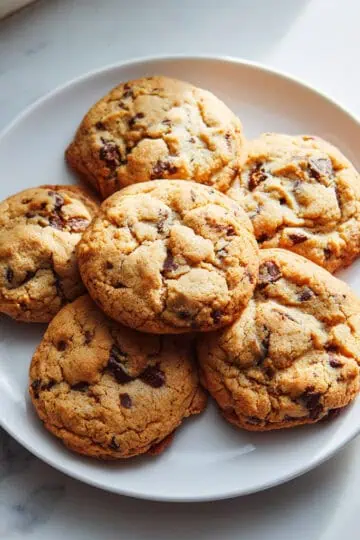
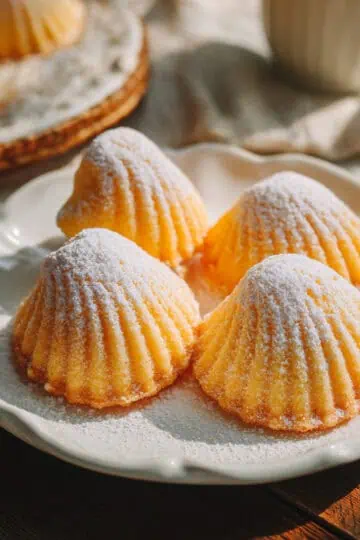
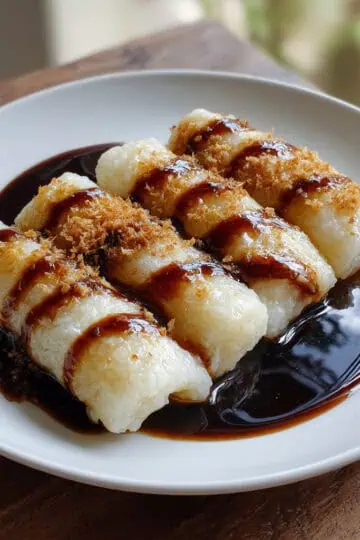

Comments
No Comments